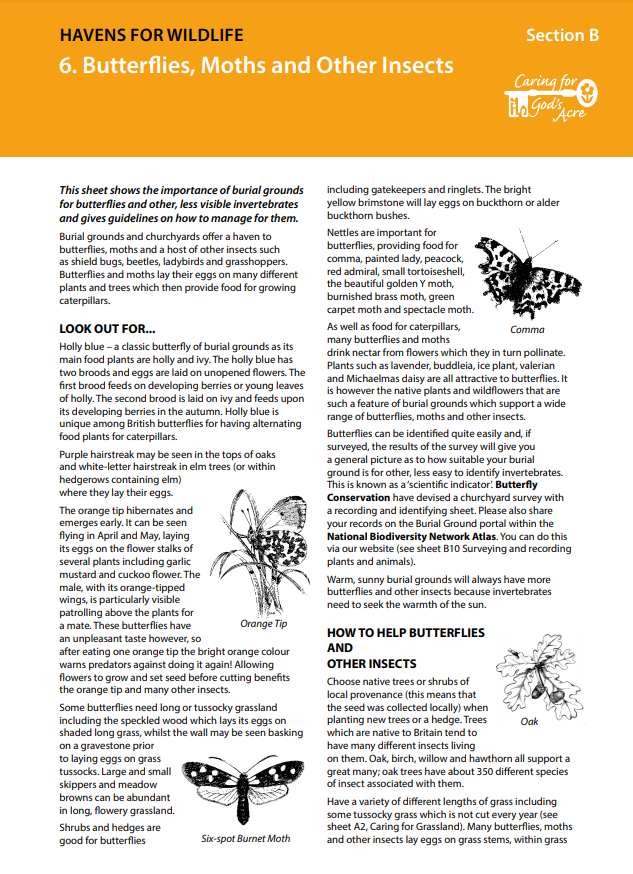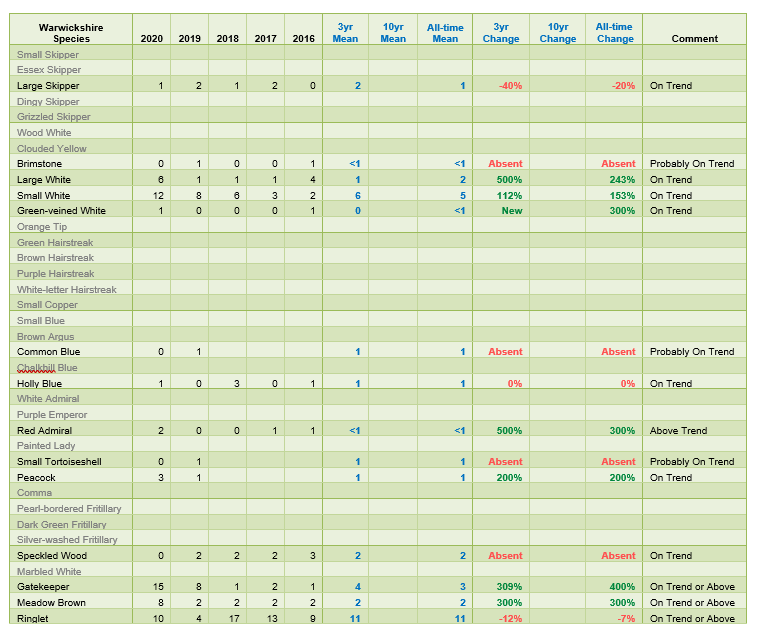Burial grounds, rich in butterflies and moths, are also rich in other invertebrates, so managing sensitively for butterflies will help a whole range of other invertebrates too. We have a resource sheet on Butterflies, Moths and other Insects here which has a really useful table on what food plants and habitat types the different butterflies need.
If you see any butterflies in your local burial ground please let us know (there are various ways to do that – see here https://www.caringforgodsacre.org.uk/get-involved/recording-2/share-your-records/ ) . Your local Branch of Butterfly Conservation would also be interested in what you find.
If you need help identifying what species of butterfly you have seen then Butterfly Conservation have a great id page. For many years Mike Slater from Warwickshire Branch of Butterfly Conservation has been undertaking butterfly transects in a few burial grounds in his area. The way to undertake a transect in the wider countryside is by walking a weekly fixed-route, typically 1-3km and butterflies in a 5m band are recorded. Although most burial grounds are smaller than 1-3km Mike has been testing the idea of ‘reduced transect’ (in terms of length and frequency) in these spaces and has had some useful results.
Burial Ground Monitoring by Mike Slater from Warwickshire Branch of Butterfly Conservation
The Warwickshire Branch of Butterfly Conservation monitors over 100 sites in the county. Butterflies are considered to be the best indicators of the health of our environment because they are relatively easy to identify and respond very quickly to environmental and climate changes, both positively and negatively.
The butterflies at Sun Rising Natural Burial Ground and the churchyards at Napton and Harbury are all currently being monitored. By comparing these sites with all our other monitored sites in Warwickshire, a yearly trend for each species can be determined. This trend is calculated by comparing the current year with the mean (average) from the previous 3 years of monitoring. This information is more useful than just comparing butterfly numbers with those of the previous year on the same site.
When examining the data from Sun Rising Natural Burial Ground it can be seen that four species of ‘brown’ butterfly followed the yearly trend in 2020 and two did better than this trend. This site has converted previous agricultural ground to an area of flower rich grassland and as a consequence, butterfly numbers are not only increasing but at a greater rate than all other sites in Warwickshire.
We are trying to increase the number of burial grounds and churchyards that are monitored and to make this easier a new method of monitoring has been developed that only involves visiting a site four times a year. These visits take place once in May, June, July and August. Although this method is less accurate than monitoring a site for 26 weeks as in a full butterfly transect, it has been found that useful data can be obtained and fed back to site owners and managers. An example of data from Harbury churchyard is shown in the following table: –
Thanks Mike for these encouraging results showing that even undertaking transects just four times a year provides useful monitoring – and that changes in management can positively impact on butterflies.




